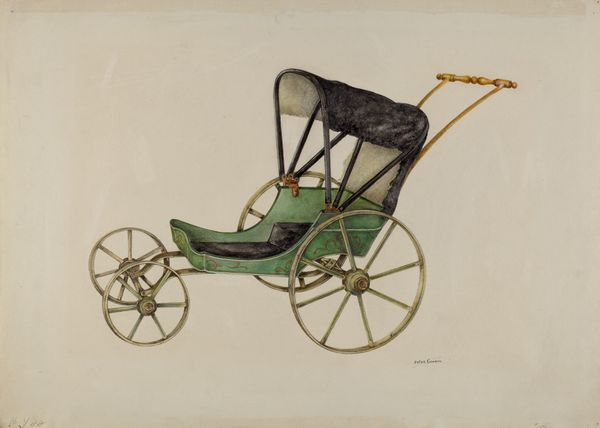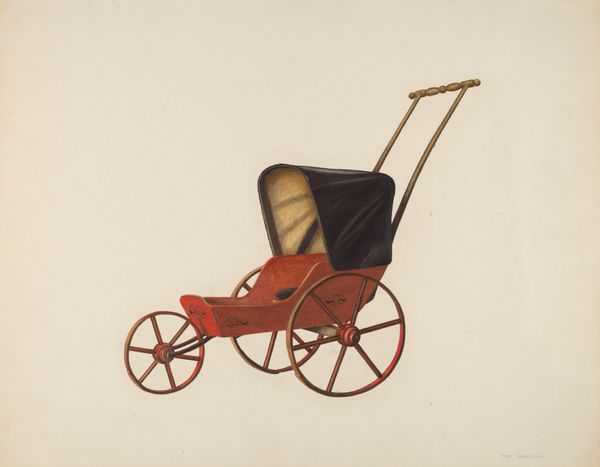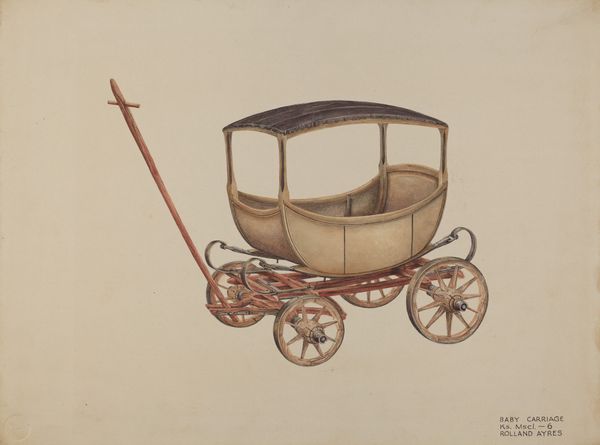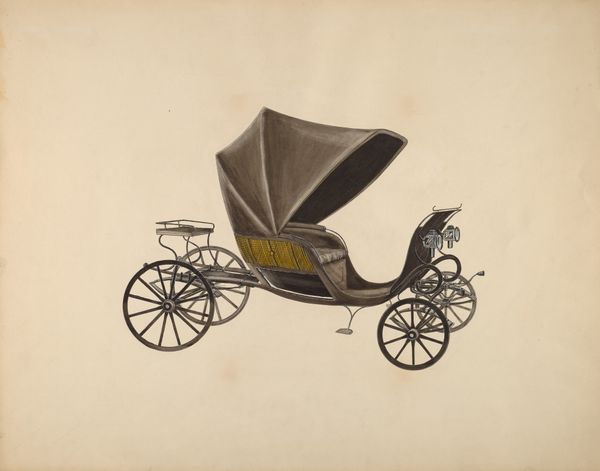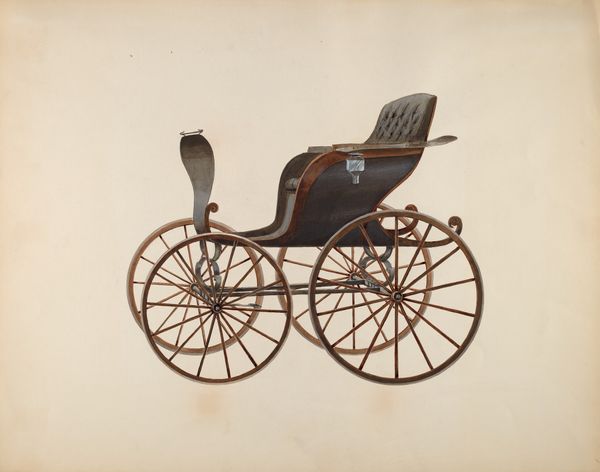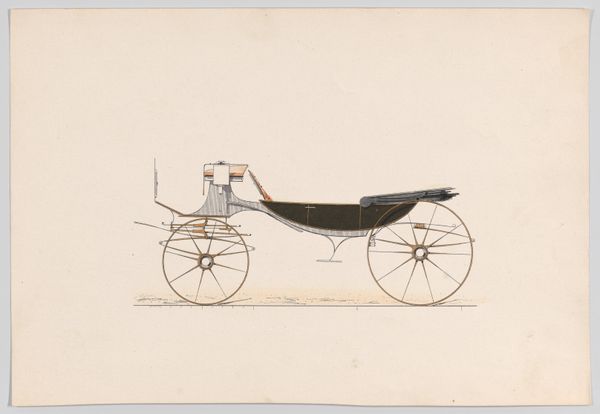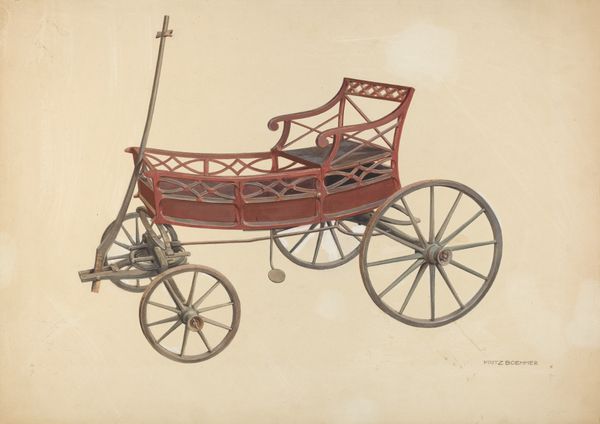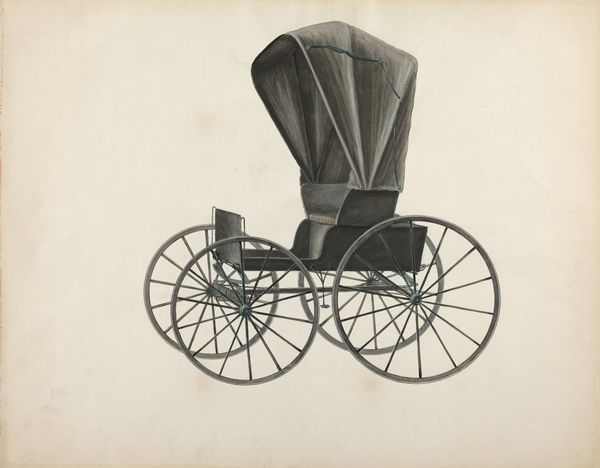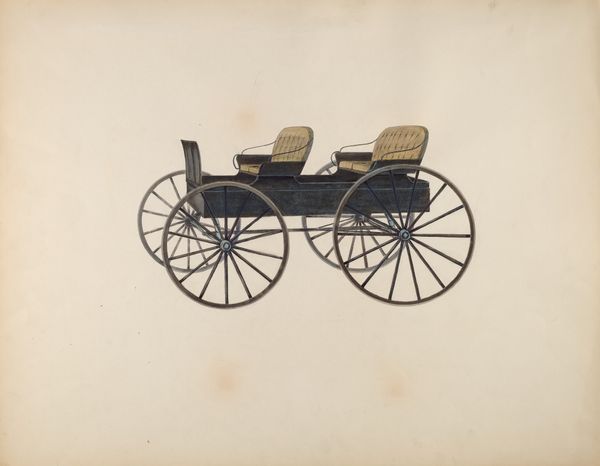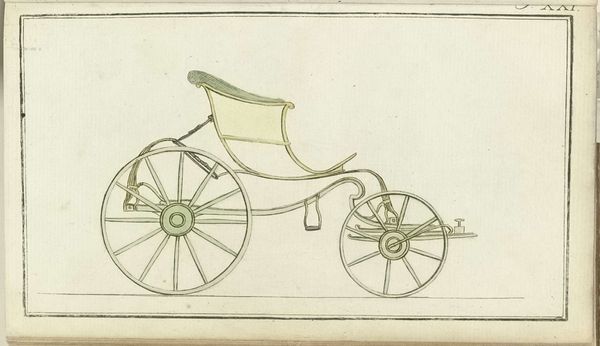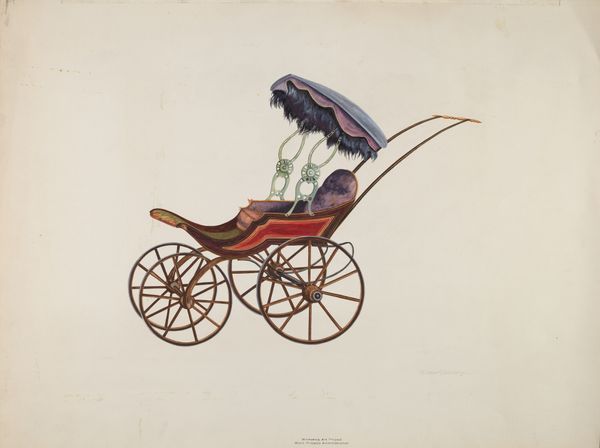
drawing, watercolor
#
drawing
#
watercolor
#
watercolour illustration
#
watercolor
Dimensions: overall: 37.9 x 53 cm (14 15/16 x 20 7/8 in.) Original IAD Object: 29" long; 20 1/2" high; 12 3/4" wide
Copyright: National Gallery of Art: CC0 1.0
Curator: What strikes me immediately is the contrast—the detailed watercolor of a seemingly luxurious object juxtaposed against its inherent function, or even absurdity. It is an intriguing drawing. Editor: Indeed. We're looking at a watercolor drawing titled "Doll Buggy," created around 1938 by Richard Barnett. Note the meticulous rendering of the wheels and frame. It suggests the buggy itself was a manufactured item. Curator: Manufactured luxury meant for children... or dolls, implying a constructed world. There's an echo of the carriage in fairy tales, transformed for play. It's also clearly designed to mirror full-sized carriages; symbols of status, power... and servitude made miniature. What psychological message does it send when children, specifically young girls in the 1930s, role-play this scene? Editor: It hints at the commodification of childhood itself. The materiality of the object is important too, however. Watercolor offers Barnett a way to capture detail but in a way that suggests ethereality: a dream-like state. Were these mass produced? It may seem luxurious, but in comparison to what? Curator: Exactly! Its symbolic power increases if we view it against the backdrop of the Depression era when this watercolor was made. A child enacting a fantasy of luxury would bring deeper psychological connotations to the present day: a form of dissociation in the face of economic hardship. Editor: The color choices add another layer: the green and dark shades of the buggy and the sepia of the wheel structure speak to me of mass production and a lack of access to colors –perhaps as important as understanding luxury versus common material of its era. Even its paper substrate and quality contribute to the material narrative of consumerism, artistic rendering, and social value of Barnett’s time. Curator: A fascinating blend of dreams and hard realities. It makes one rethink the loaded idea of childhood play itself. Editor: Yes, truly the interaction between the symbolism and how the materials themselves speak to that interpretation is fascinating.
Comments
No comments
Be the first to comment and join the conversation on the ultimate creative platform.
